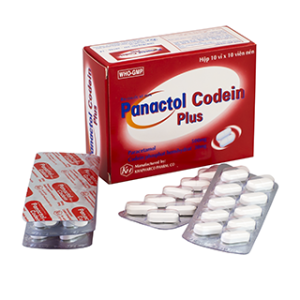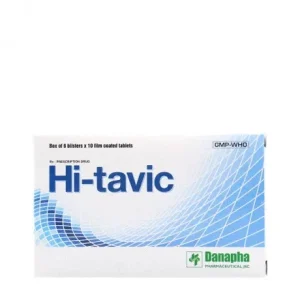We deliver to you every day from 7:00 to 23:00
The best discounts this week
Every week you can find the best discounts here.
Natural Pain Relief: Safe and Effective Alternatives to Medications
Pain is a universal experience, whether from a chronic condition, injury, or general discomfort. While prescription medications offer quick relief, many individuals are seeking natural pain relief options to manage their discomfort. These alternatives are often safer, with fewer side effects, and can be just as effective as traditional painkillers. In this article, we’ll explore various natural pain relief methods, providing you with a comprehensive guide to managing pain naturally.

What is Natural Pain Relief?
Natural pain relief refers to non-pharmaceutical treatments and remedies used to alleviate pain. These alternatives are often derived from plants, herbs, or lifestyle changes. Many people choose natural pain relief options because they are more in tune with their body, offer long-term benefits, and come with fewer risks of side effects compared to traditional pain medications.
Types of Natural Pain Relief
There are several natural pain relief options that you can use depending on the cause and severity of the pain. Here are some popular ones:
-
Herbal Remedies
Many herbs have been used for centuries to treat pain. Some common herbs known for their pain-relieving properties include:-
Turmeric: Contains curcumin, a powerful anti-inflammatory compound.
-
Ginger: Known for its ability to reduce inflammation and provide joint pain relief.
-
Capsaicin: Found in chili peppers, it can be applied topically to reduce pain.
-
-
Essential Oils
Essential oils are derived from plants and are known for their healing properties. They can be used through aromatherapy, massages, or topical applications. Popular oils for pain relief include:-
Lavender oil: Helps with headaches and muscle tension.
-
Peppermint oil: Relieves migraines and muscle aches.
-
Eucalyptus oil: Reduces inflammation and promotes relaxation.
-
-
Acupuncture and Acupressure
Acupuncture involves inserting fine needles into specific points on the body to relieve pain and promote healing. Acupressure is a similar technique but uses physical pressure instead of needles. Both methods are effective for conditions like back pain, headaches, and arthritis. -
Massage Therapy
Massage is a well-known natural remedy for reducing muscle tension and improving circulation. It’s particularly helpful for managing pain from muscle strain, fibromyalgia, and chronic tension headaches. -
Physical Therapy and Exercise
Regular physical activity helps keep the body strong and flexible, reducing pain in the long run. For chronic pain conditions like arthritis or lower back pain, specific exercises can help strengthen muscles, improve posture, and reduce pain. Activities such as yoga, swimming, or walking are also excellent for easing pain.
:max_bytes(150000):strip_icc()/VWH-Paige-McLaughlin-Natura-Pain-Relief-Herbs-Standard-20f690ae9d3a4fe994f76e24cf66343c.jpg)
Benefits of Natural Pain Relief
Switching to natural pain relief methods has numerous benefits, making them an attractive option for many. Here are some of the key advantages:
1. Fewer Side Effects
Many painkillers, especially opioids and NSAIDs, come with significant side effects. These include addiction, gastrointestinal issues, and organ damage. Natural remedies, on the other hand, are generally safer when used correctly and have fewer adverse effects.
2. Chronic Pain Management
For conditions like arthritis or fibromyalgia, natural remedies can offer long-term pain relief. Unlike painkillers, which may lose effectiveness over time or cause dependency, natural treatments focus on reducing inflammation and improving overall wellness.
3. Holistic Healing
Natural pain relief methods often take a holistic approach by addressing the root causes of pain rather than just masking symptoms. They aim to balance your physical, mental, and emotional health, which contributes to overall well-being.
4. Cost-Effective
Many natural remedies, like herbal treatments or simple physical exercises, can be done at home and are often less expensive than prescription medications or therapies. This makes natural pain relief more accessible to a broader range of people.
Common Natural Pain Relief Techniques
Here are some common techniques for managing pain naturally:
1. Heat and Cold Therapy
Heat and cold therapy are two of the most commonly used methods for relieving pain. Cold therapy (using ice packs) helps reduce inflammation and numbs the area to provide relief from injuries like sprains or strains. Heat therapy (using warm packs or baths) is effective for relaxing muscles and alleviating chronic pain, such as arthritis.
2. Mindfulness and Meditation
Mindfulness and meditation can help reduce pain by changing how the brain processes discomfort. By practicing deep breathing or focusing on the present moment, individuals can manage pain more effectively and reduce the psychological distress that often accompanies chronic pain.
3. Diet and Supplements
Certain foods and supplements can help reduce inflammation and alleviate pain. Omega-3 fatty acids, found in fish oil and flaxseeds, are known to reduce joint pain. Additionally, vitamins like Vitamin D and Magnesium can improve bone and muscle health, potentially reducing discomfort from conditions like osteoporosis or muscle cramps.
4. CBD (Cannabidiol)
Cannabidiol (CBD), derived from hemp plants, has gained popularity for its pain-relieving properties. It is often used in oil or cream form to reduce pain and inflammation, particularly for conditions like chronic pain, arthritis, and muscle soreness.

When to Consult a Doctor
While natural pain relief can be highly effective, it’s important to consult a healthcare professional if your pain is persistent, severe, or related to an underlying health condition. Natural remedies are not always a substitute for medical treatments, especially if your pain is a result of serious conditions like cancer, fractures, or infections.
Frequently Asked Questions (FAQs)
1. Can natural pain relief methods replace prescription medications?
In some cases, yes, natural pain relief methods can replace prescription medications. However, it’s important to consult your doctor, especially if you are dealing with a serious condition or have been prescribed pain medication for long-term use.
2. Are natural pain relief remedies safe for everyone?
While most natural remedies are safe, they may not be suitable for everyone. For example, some herbal supplements may interact with other medications. Always check with your healthcare provider before starting any new natural pain relief treatments.
3. How long does it take for natural pain relief to work?
The effectiveness of natural pain relief methods can vary depending on the type of pain and the remedy being used. Herbal treatments may take longer to show results, while physical therapy or heat therapy can offer immediate relief.
4. Is CBD a safe natural pain reliever?
CBD is generally considered safe, but its effectiveness for pain relief varies from person to person. It’s important to purchase CBD products from reputable sources and consult with your doctor before use, especially if you are taking other medications.
5. What should I do if natural remedies don’t work?
If natural pain relief methods are not effective, it’s important to seek medical advice. A healthcare provider can help determine the cause of the pain and recommend the best treatment options, which may include prescription medications or therapies.
Conclusion
Natural pain relief offers a wide array of options for those seeking an alternative to prescription medications. From herbal remedies and essential oils to physical therapy and acupuncture, there are plenty of safe and effective ways to manage pain naturally. Always remember to consult with a healthcare professional before starting any new treatment to ensure it’s the right choice for your condition. With the right approach, you can find relief and improve your quality of life without relying solely on medications.
For more tips on managing pain naturally, visit our Pain Relief Guide.











